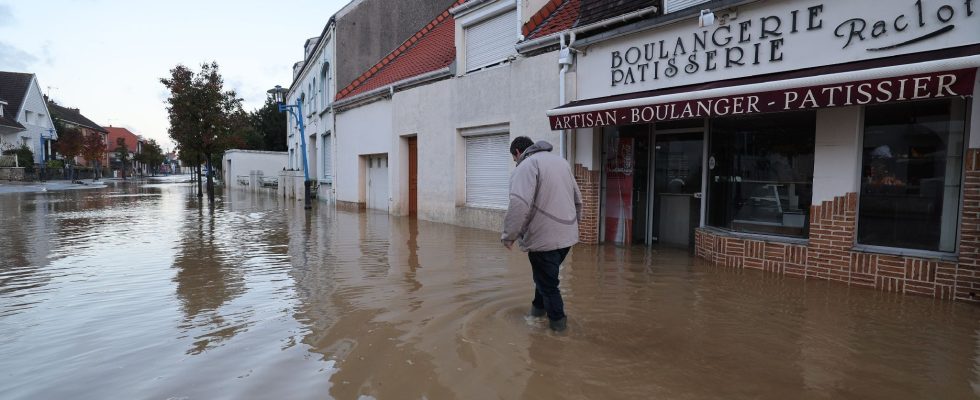Between a region affected by flooding and another affected by historic drought, there are only a thousand kilometers. Paradoxical and striking effect of an ever more disrupted climate, and growing tensions on the country’s water resources. Each summer now imposes its debate on its uses and access, while the sometimes torrential rains of winter ravage certain territories. How can France adapt to this new reality? L’Express wanted to contribute to a debate that is more necessary than ever. These six “black scenarios” for water by 2030 are the translation. They are neither forecasts nor predictions. But hypotheses on which public and industrial authorities are already working more or less directly, and whose frameworks have been refined and enriched by the forty experts interviewed: researchers, meteorologists, senior civil servants, engineers, insurers… All are unanimous: the The country’s resilience in the face of these events is being built now.
The contrast is striking. On one side, the thirsty Pyrénées-Orientales, suffering a historic drought. Between April 2023 and March 2024, the cumulative precipitation deficit in the east of the department – where the majority of the population resides – exceeded normal by 60%. On the other, successive floods. Since November 2023, more than 230 municipalities in Pas-de-Calais and the North have been affected by torrential rains. Heat waves accompanied by downpours: this counterintuitive observation was noted in particular on April 22 in a report published jointly by the European Copernicus Observatory and the World Meteorological Organization. If the 2023-2024 meteorological winter was the “second warmest on record”, it was accompanied by precipitation up 7%. To the point of making 2023 one of “the four rainiest years in Europe since 1950”.
Faced with these events of almost unprecedented scale and recurrence, the question of adaptation to climate change arises. That of the projection of future disasters, too. Because the consequences of a flood, an episode of intense drought or a cyclone are not limited to the instant T when these events occur: the damage is – expensive – and lasts – a long time. According to the professional association France Assureurs, natural disasters cost French insurers 6.5 billion euros in 2023. This is the third most expensive year, behind 1999 (13.8 billion euros) and 2022 ( 10 billion euros). “We must take into account the potential domino effects: that of costs, the problems surrounding the upgrading of critical infrastructures, such as electricity networks, not to mention societal problems, like possible population displacements,” lists Anne. Johannet, coordinator of the Center for Research and Education in Environment and Risks at IMT Mines Alès. To try to remove these uncertainties, analyzes aimed at framing the impact of climate change between now and 2050 have multiplied. Fewer are those that focus on the short term – in this case, the next six years.
Around forty experts
L’Express therefore carried out this exercise. Around forty experts – researchers, meteorologists, senior civil servants, engineers, insurers, etc. – present in this file their analyzes of the main threats and tensions facing France between now and 2030. These six scenarios are neither forecasts nor forecasts. predictions. Their framework was developed both by consulting projection studies and risk protection plans available in open source, and by soliciting the managers of the country’s main water and electricity networks.
The majority of these hypotheses overlap those on which manufacturers and public authorities are working. They are directly linked to the already visible consequences of climate change, such as the scenarios exploring the consequences of a prolonged drought in the Rhône valley, or a lack of water making it difficult to extinguish fires in the Hérault. Some, like that of the 100-year flood of the Seine, have been explored because they have long been studied by state services and businesses.
“We are preparing for it, and this preparation is not new, insists Emmanuel Lenain, global security director at Suez France. Investments have been made to protect strategic equipment. But that does not mean that everything is easy.” In fact, there have been some failures: in 2022, a report from the Court of Auditors underlined the “insufficient prevention of the risk of flooding in Ile-de-France.” All regions of France are trying to improve their crisis management. The task, however, is arduous. In a France that is increasingly affected by climate change, preparing for the right measure requires a lot of forward-looking work. L’Express wanted to add its stone to the building.
.
